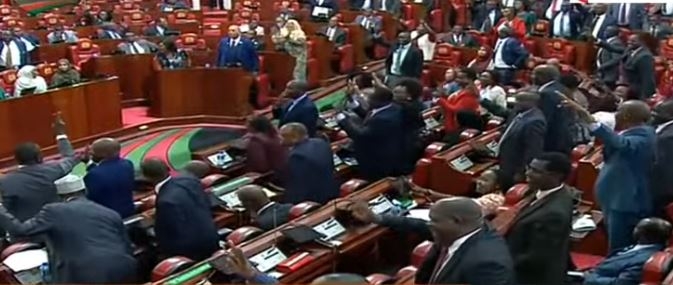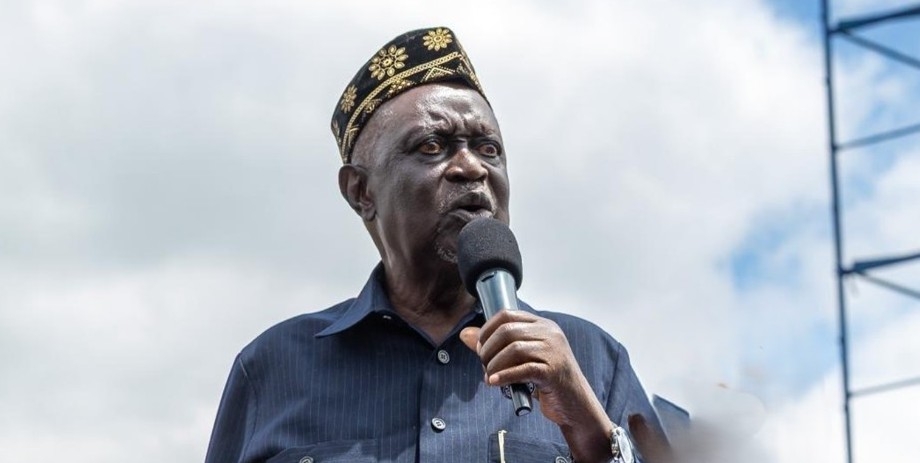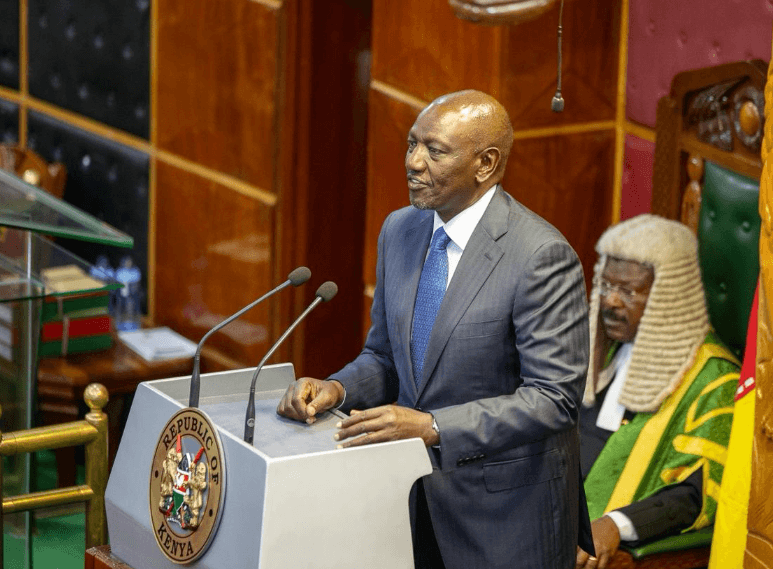Private schools have yet again shone in the Kenya Certificate of Primary Education exam, elbowing out public institutions to maintain their status as academic giants.
Boys outshone girls.
And the number of candidates with special needs who scored 400 and above rose to 39 from only two in 2021.
The government no longer ranks pupils and schools.
But going through the results the Star observed that candidates who sat the 2022 examination in academies stunned their public school counterparts.
Out of the top 12 candidates sampled, only four were from public schools; the rest were from academies.
Of the 12, there were only two girls, who scored above 423 marks.
Lewis Omondi from St Peters Mumias Boys Boarding Primary School and Robinson Fwaro from Christ the King Primary School in Bungoma scored 431 out of the possible 500.
The highest mark in this exam was 431.
Wayne Nyaberi from Imperial Primary School and Collins Muli from Premese Academy got 429.
Other top pupils are Wanda Kisaka (426), Jammel Ouma (426), Makunga Bright (425), Mwaniki Baraka (424), Kiptui Ryan (424) and Kidaka Wesley (423).
Ricks Runya and Mwanzia Harriet scored 422.
The overall performance, Education Cabinet Secretary Ezekiel Machogu said, was impressive despite the challenges faced by the candidates compared to the 2021 cohort.
“The mark of the highest candidate rose four points from 428 in 2021 to 431 in 2022 despite the difficult situation that faced this cohort of candidates,” he said.
We are therefore very impressed with the KCPE examination class of 2022 for performing very well and raising the standards of the mean performance
These were Machogu's first exam results since he took over the Education ministry.
Some 1, 233,852 candidates sat the examination in November; of these 620,965 were boys (representing 50.32 per cent) and 612,887 were girls (49.97 per cent).
Machogu, who was accompanied by PS Belio Kipsang, Knec CEO David Njengere and Knec chairman Julius Nyabundi, explained that there was an average improvement in the average mean score.
Data analysis, he said, showed that more than half of all the candidates—619,593—scored between 200 and 299 marks as compared with 578,106 in the previous year.
Some 9,443 scored between 400 and 500 while 307,756 scored between 300 and 399.
Those in the 100-199 bracket were 296,336.
“We are therefore very impressed with the KCPE examination class of 2022 for performing very well and raising the standards of the mean performance,” Machogu said.
There was a reduction in the number of candidates who scored between one and 99 marks as compared to the last two years.
The number, the CS said, significantly dropped to 724 from 1,170 in 2021.
“This was an indicator that most candidates scored better grades than the previous year,” Machogu said.
The first candidate with special needs scored 419 marks, an improvement from the top candidate in 2021 who scored 417.
Statistics further show that those who had between 300 and 399 were 296 (12.2 per cent) while some 838 others got between 200 and 299 (34.6 per cent).
Only one candidate scored below 100 while 1,270 had between 100-199.
An improvement was recorded in four papers—English, Kiswahili, Insha and Kenyan Sign Language.
There was a drop in Composition, Kenyan Sign Language Composition, Mathematics, Science, Social Studies and Religious Education.
These candidates [caught cheating] have scored zero in subjects where they engaged in malpractices. Nonetheless the affected students' overall marks will be computed less the mark awarded in the affected subject.
Girls performed better in English, Kiswahili and Kenyan Sign Language while boys did well in Mathematics, Science, Social Studies and Religious Education.
“I wish to direct the quality assurance and standards to find ways of addressing the gaps that might be [affecting] the performance of either gender as there seems to be a pattern where girls beat boys in specific subjects each year and vice 32 versa,” Machogu said.
Some 252 candidates engaged in examination malpractices.
The cases, Machogu said, were recorded in nine examination centres out of the 28,408.
He, however, said they will all transition to junior secondary "in the spirit of 100 per cent transition".
“These candidates have scored zero in subjects where they engaged in malpractices. Nonetheless the affected students' overall marks will be computed less the mark awarded in the affected subject.”
Machogu attributed the decline in exam cheating to the combined efforts of the multi-agency team.
The team, he said, is comprised of the ministries of Education, Interior, ICT and Digital Economy, and the Teachers Service Commission.
The number of registered candidates who were 12 years and below also declined from 33,627 (2.74 per cent) in 2021 to 31,498 (2.53 per cent) in 2022.
The CS said this indicated that “parents and schools are on the right path of enrolling children in school at the right age.”
The counties with the highest percentage entry for candidates below the age of 12 were Baringo, Wajir, Kericho, Bomet and West Pokot.
The highest number of candidates were in the “appropriate” age bracket of 13-15, accounting for 885,162, a trend Machogu said has been replicated in the last five years.
The counties that had the highest percentage of candidates over the age of 18 were Garissa, Turkana, Kilifi, Kwale and Mandera.
The CS also gave an update on the transition to junior secondary.
He said that the Kenya Institute of Curriculum Development has already released curriculum designs and instructional materials for Grade 7 learners.
More than 1.2 million learners are to transition to Grade 7 when schools reopen in late January.
Machogu said he will meet with the players in the sector to consider the guidelines to be adopted.
"I expect to hold a meeting with all stakeholders on January 3 to 7 to consider and release guidelines to provide a roadmap to all players as they prepare for junior secondary school," he said.
The President directed that grades 6, 7 and 8 be domiciled in primary schools.
Machogu said he has formed a multi-agency committee to draft guidelines for a seamless transition.
The committee is also tasked with ensuring consistency in the implementation of the junior secondary curriculum, including teaching, learning and assessment.
Edited by Josephine M. Mayuya












